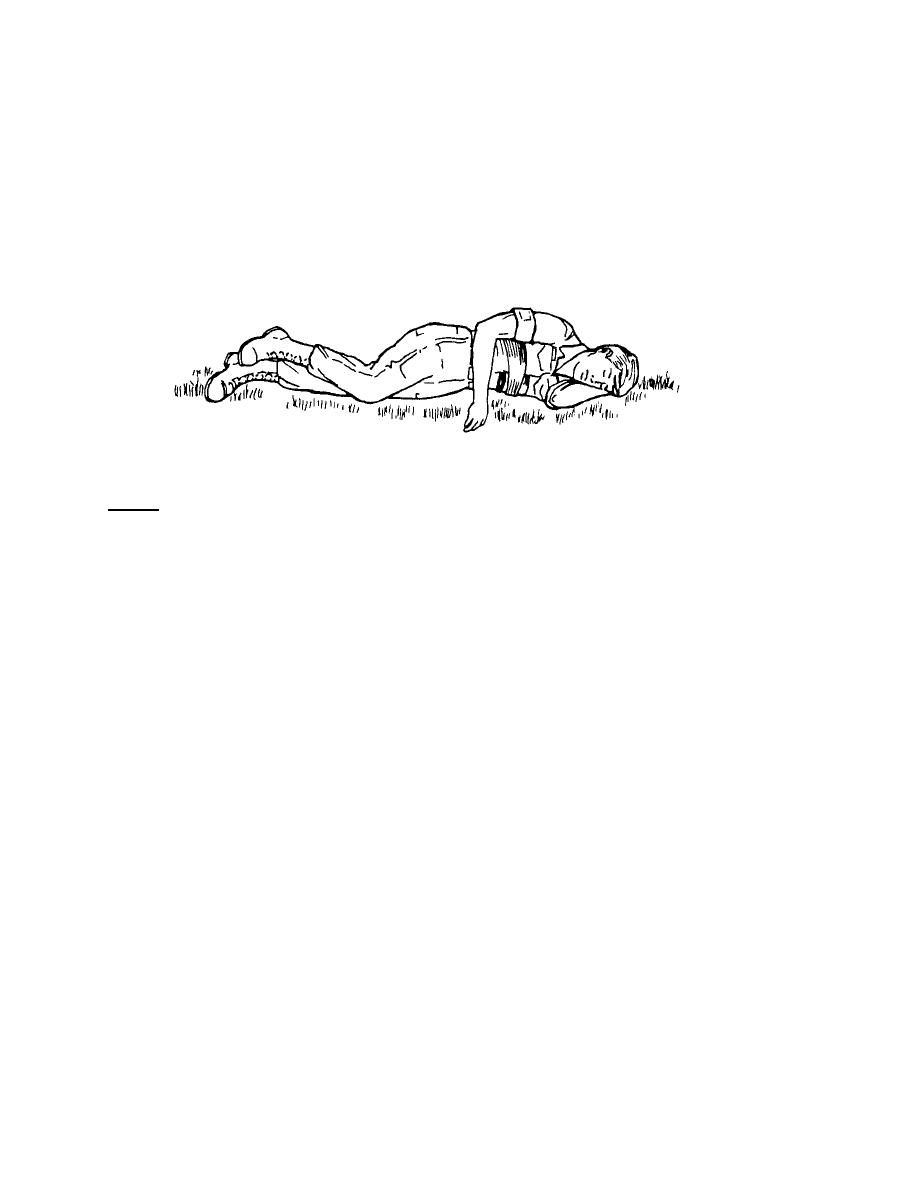
4-6.
POSITIONING A CASUALTY WITH A DRESSED OPEN CHEST WOUND
Position the casualty on his side (recovery position) with his injured side next to
the ground (figure 4-4). Pressure from contact with the ground acts somewhat like a
splint to the injured side and helps to reduce pain. (If you position the casualty with his
uninjured side toward the ground, the weight on the uninjured side might make
breathing difficult for the casualty.)
Figure 4-4. Casualty with a dressed open chest wound.
NOTE:
The casualty may wish to sit up. If he can breathe easier when sitting up than
lying on his side, allow him to sit up with his back leaning against a tree, wall,
or other support. If he becomes tired, have him lie on his injured side again.
Section II. TREATING TENSION PNEUMOTHORAX
4-7.
TENSION PNEUMOTHORAX
Tension pneumothorax occurs when there is a buildup of air in the plural space
that cannot escape. As the air pressure outside the lung continues to increase, the
affected lung continues to collapse. In addition to causing further collapse of affected
lung, the increasing air pressure pushes the mediastinum (the mass of material--
including the heart--that separates the two plural sacs) in the opposite direction. This
movement of the mediastinum may compress the uninjured lung, major blood vessels,
and the heart. You will need to perform a needle chest decompression to relieve the
pressure.
4-8.
SIGNS AND SYMPTOMS OF TENSION PNEUMOTHORAX
a. Signs and symptoms of tension pneumothorax include the following:
(1)
Anxiety, agitation, and apprehension.
(2)
Diminished or absent breath sounds.
(3) Increasing difficulty in breathing (dyspnea) with cyanosis (bluish tint of
lips, inside of mouth, fingertips, and/or nail beds)
MD0877
4-7



 Previous Page
Previous Page
